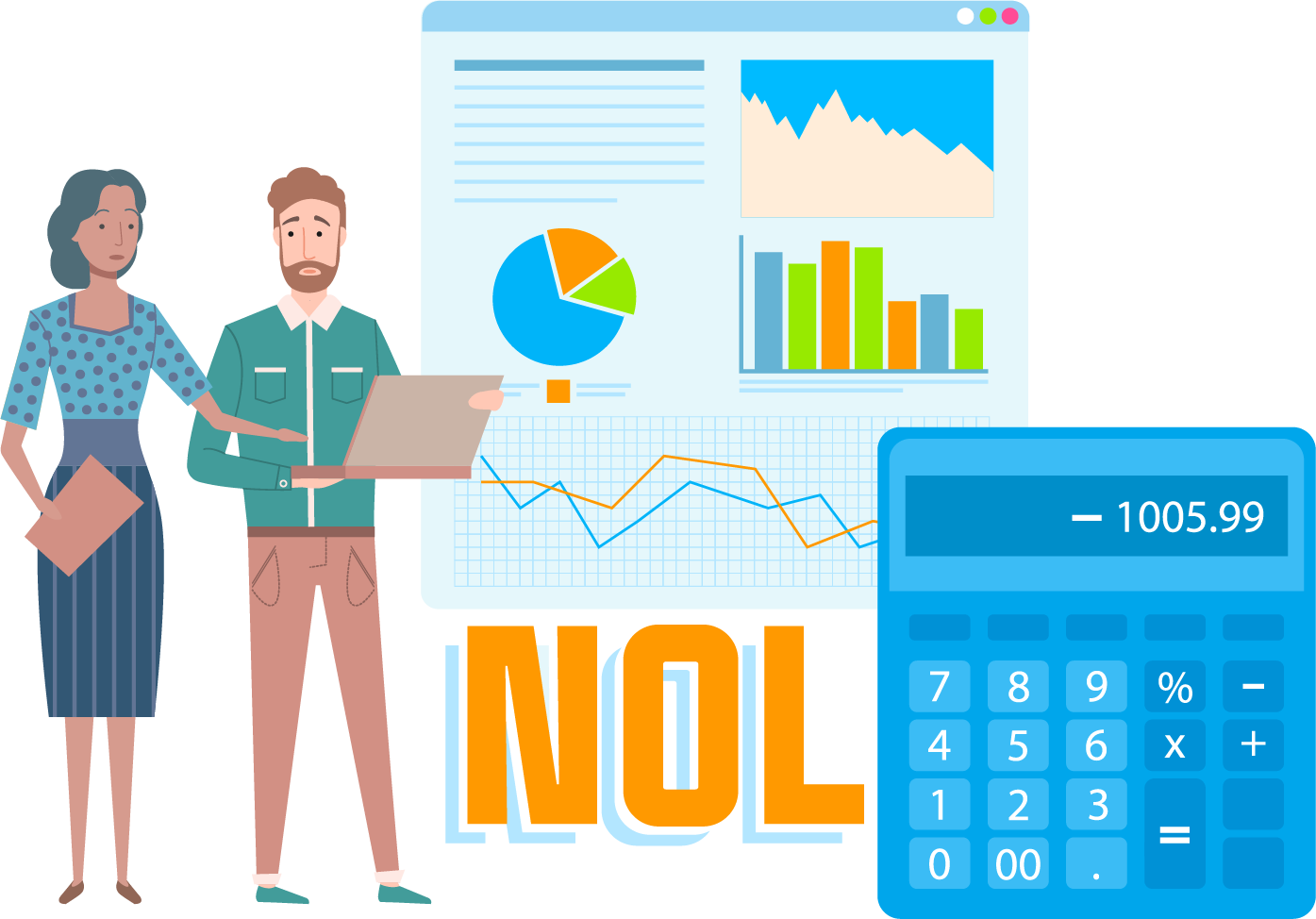What’s a Net Operating Loss (NOL) – and Do You Have One?
October, 12 2021 by Carolyn Richardson, EA, MBA
If you are a small business owner (and even if you are not), you may have heard about net operating losses. You may also know that if you have one, it may create a reduction in your taxes in other years. If you haven’t heard of net operating losses, or NOLs, hopefully, this article will give you some insight on whether you can benefit from this loss. This may be particularly important if your small business is still suffering economic effects from the COVID-19 pandemic.
As a simple “rule of thumb,” individual taxpayers may have a net operating loss when their taxable income is a negative number (Form 1040, line 15 for 2020). However, it is possible to have negative taxable income and still not have a net operating loss. NOLs can only be generated by losses in excess of income when those losses come from your business activities or activities engaged in for profit, such as rental real estate or material participation in a partnership, LLC, or S corporation. For individual taxpayers with none of those, the only way to have a net operating loss is from a casualty loss (and casualty losses are generally limited to federally declared disasters until 2026 under current law).
As a result, just having negative taxable income may not be enough to create an NOL, as taxable income can be negative by the subtraction of your itemized deductions or standard deduction if your income is low enough. And other than casualty losses, itemized deductions are not allowed for the NOL. Neither is the standard deduction or personal exemptions for years those were allowed.
So, a better rule of thumb might be that you have an NOL when your adjusted gross income is negative (Form 1040, line 11 for 2020). But even this isn’t a 100% guarantee that you have an NOL.
 As stated earlier, net operating losses are usually generated by deductions and losses from businesses or income-producing activities. Business income includes income not only from a trade or business, such as Schedule C, but also from employment such as salaries and wages. It also includes a partner’s or shareholder’s share of business income from those entities, providing the taxpayer materially participates in those activities. It does not include rental income or ordinary gain from the sale or other disposition of business real estate or depreciable business property; however, that income is included in the calculation of the actual NOL.
As stated earlier, net operating losses are usually generated by deductions and losses from businesses or income-producing activities. Business income includes income not only from a trade or business, such as Schedule C, but also from employment such as salaries and wages. It also includes a partner’s or shareholder’s share of business income from those entities, providing the taxpayer materially participates in those activities. It does not include rental income or ordinary gain from the sale or other disposition of business real estate or depreciable business property; however, that income is included in the calculation of the actual NOL.
The key to determining when you have a net operating loss is that the loss must be from “operating,” i.e., from “active” sources of income or deductions as opposed to “passive” ones or from personal expenses. Since most passive activities and investment losses have their own different carryover rules, they are not included in the NOL calculation. For example, when capital losses exceed capital gains for the year, the allowable loss on your return is limited to only $3,000 for the year, with any remaining losses carried over indefinitely. Passive losses which cannot be used during the year become suspended passive losses, and those losses cannot be included in the NOL. Passive losses are generated by business activities that the taxpayer does not participate in or are defined by statute. If the taxpayer is allowed a portion of the $25,000 allowable loss for rental real estate activities (which are passive by statute) in which the taxpayer actively participates, those are included in the NOL calculation, but only up to the amount of the allowable loss, which phases out as your income goes higher (and disappears completely if your income is $150,000 or more). This can be a particular point of confusion for taxpayers since their actual out-of-pocket costs for these kinds of losses may exceed their allowable current year deduction, and thus in their minds, create a loss.
Business income includes income not only from a trade or business such as Schedule C, but also from employment such as salaries and wages. It also includes a partner’s or shareholder’s share of business income from those entities, providing the taxpayer materially participates in those activities. It does not include rental income or ordinary gain from the sale or other disposition of business real estate or depreciable business property; however, that income is included in the calculation of the actual NOL and will reduce your loss.
Nonbusiness income is used to reduce any potential NOL. This is income that is not related to employment or to a trade or business and includes dividends, interest, endowment income, and annuity income, such as pensions or IRA distributions. It also includes a partner’s or shareholder’s share of nonbusiness income from partnerships or S corporations that are considered to be passive activities. Some tax-exempt income is also treated as nonbusiness income.
What this means is that simply having losses on your return is not enough to generate an NOL. If your wages exceed your business losses, for example, those losses are absorbed by your wage income, and no NOL is generated. If you do have an actual NOL, however, you can carry it back to prior tax years to generate a refund. NOLs incurred in 2020, for example, must be carried back five years unless you elect to forego the carryback, which is mandatory. If anything is leftover of the NOL after the carryback, you can carry it forward. Rather than filing amended returns for the prior years, you can file Form 1045 instead, which may result in a faster refund. NOLs incurred in 2021 or later have no mandatory carryback period and only carry forward.
But like most areas of tax law, NOLs are quite complicated. You cannot simply take your negative income and carry it back to prior years. Schedule A of Form 1045 is used to calculate the actual NOL amount that can be used as a carryback, and this calculation requires you to reduce the NOL by any nonbusiness income or prior NOLs you may have carried forward. And Schedule B of the form calculates how much of the NOL is actually used every year of the carryback. Even if you file amended returns, you have to attach these schedules to the amended return to show you have correctly accounted for the adjustments to the NOL.
We see a lot of self-prepared tax returns here at TaxAudit, and I can tell you that in the many returns I have reviewed that contain a potential NOL, none of the calculations were done correctly and most of the taxpayers did not have an NOL. Many of these were shown on the return as carryforwards from prior years, but the taxpayers failed to reduce the NOL amount by the required adjustments in prior years. These returns were all under audit for the NOL amount, and it seemed unlikely that the amount could be successfully defended in an audit. It’s a complicated calculation even for tax professionals, and most tax preparation software programs do not support the calculation of the required NOL adjustments. It’s important to get the numbers right for an NOL. Unlike most tax issues, if you are using an NOL carryback in a year that would normally have a closed statute, the statute is changed to that of the originating year. And if the IRS or state examines a carryforward year, they can examine the original NOL year and any intervening carryover years to determine if the loss claimed in the current year is correct. Given that NOLs can now be carried forward indefinitely, you don’t want this happening to you!





